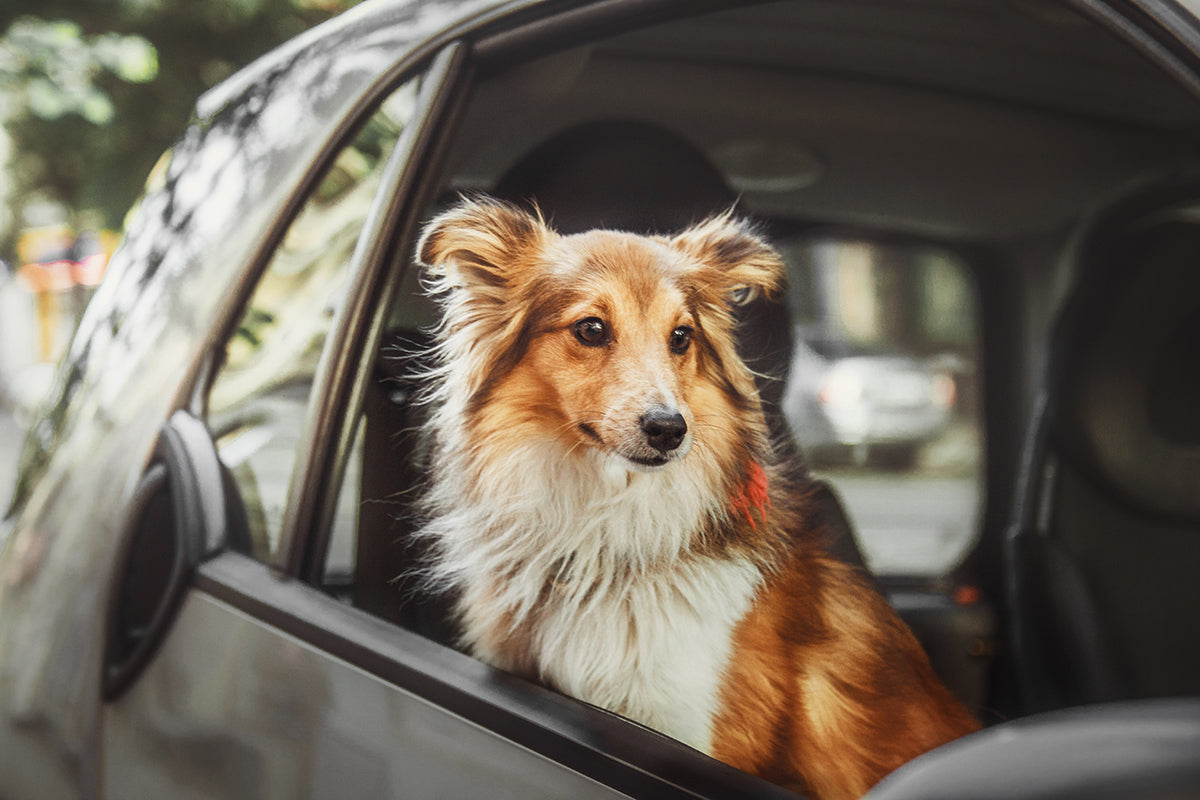
How Long Can a Dog Stay in the Car?
You're driving around town with your dog, enjoying the ride, when you suddenly remember you need milk for tomorrow. You quickly pull into the grocery store parking lot, and a question pops into your head: "Is it okay to leave my dog in the car while I quickly run in for this one item?" Many pet owners face this dilemma, and the answer can make all the difference between a fun trip and a serious problem.

The Deadly Temperature Trap
Every year, countless pets suffer from preventable car-related injuries and heat-related emergencies. Leaving your dog in a parked car, even for a few minutes, can quickly become life-threatening. Heat-related pet deaths more than doubled in 2023 compared to the previous year, highlighting a growing crisis. Understanding these risks is crucial for responsible pet ownership and ensuring your dog's safety during travel.
Cars Quickly Become Ovens
The most significant threat to your dog's safety is temperature. Even a parked vehicle can quickly become a dangerous trap. On a mild 70°F day, the interior of a car can rapidly escalate to nearly 100°F within just 20 minutes — and more than 110°F in one hour — creating a potentially fatal environment for pets. Hot weather transforms vehicles into virtual ovens, with temperatures rising at an alarming rate even when windows are cracked open. Ensuring your dog's safety in the car during hot weather is essential for responsible pet ownership.
Cold Cars Also Pose a Threat
While summer heat often receives the most attention, cold weather presents equally serious risks. Just as cars can retain heat and become sweltering greenhouses, they can also retain cold and turn into refrigerators that rapidly drop in temperature. Dogs— especially those that are small, thin-coated, senior, immunocompromised, or ill —can experience discomfort when exposed to chilly conditions below 45°F. Thick-coated dogs aren't immune either, as prolonged exposure to extreme temperatures can quickly overwhelm their natural temperature regulation.
Signs Your Dog Is in Distress
Recognizing when your dog is uncomfortable is crucial. Heatstroke can quickly become life-threatening for dogs. Early warning signs include rapid, excessive panting; bright red gums; and increased drooling. As the condition progresses, dogs may show loss of coordination, extreme lethargy, and heightened heart rate. Severe cases can lead to muscle tremors, collapse, and potentially coma. Any dog displaying these symptoms requires immediate cooling and veterinary attention.
Dog Car Safety Tips
To keep your dog safe when traveling together, consider these essential guidelines:
-
Never leave your dog unattended. Even brief periods can be life-threatening.
-
Ensure proper ventilation. When stopping, always park in the shade and leave windows partially open.
-
Prioritize hydration and comfort. Bring water and a portable bowl, and consider cooling mats or protective vests.
-
Use pet safety equipment. Never let a pet "free roam" in the vehicle. Ensuring your dog is secure in the car while traveling is paramount.
The K&H Portable Pet Console Booster Dog Car Seat is perfect for small dogs that prefer staying close to her pet parent. And it doubles as a fully enclosed portable pet carrier. If you have a larger dog, the K&H Travel Safety Barrier helps keep dogs restricted to the backseat and has convenient pockets for treats. Pair with the K&H Vehicle Door Protector to help protect your car from dirty paws and scratches.
How Long Can a Dog Stay in the Car?
Ideally, not at all. Veterinary experts unanimously agree that leaving dogs unattended in vehicles poses an extreme risk to your pet’s well-being.
Legal consequences add another layer of concern. Many states now have laws that explicitly allow law enforcement or concerned citizens to take immediate action (including breaking car windows) to rescue pets in apparent distress. These laws underscore the serious nature of leaving dogs unattended in vehicles.
Instead of leaving your dog unattended in the car, try alternative solutions, which are always preferable to risking your dog's safety. For instance, consider pet-friendly destinations, bring a travel companion who can watch your dog, or use pet daycare services. Sometimes, the best choice when you’re out and about is simply leaving your dog at home in a comfortable, safe environment.
By understanding the risks and taking proactive measures, you can ensure comfortable and secure travel for your four-legged friend. When uncertainty strikes, always err on the side of caution. Your pet's life depends on your responsible choices.



